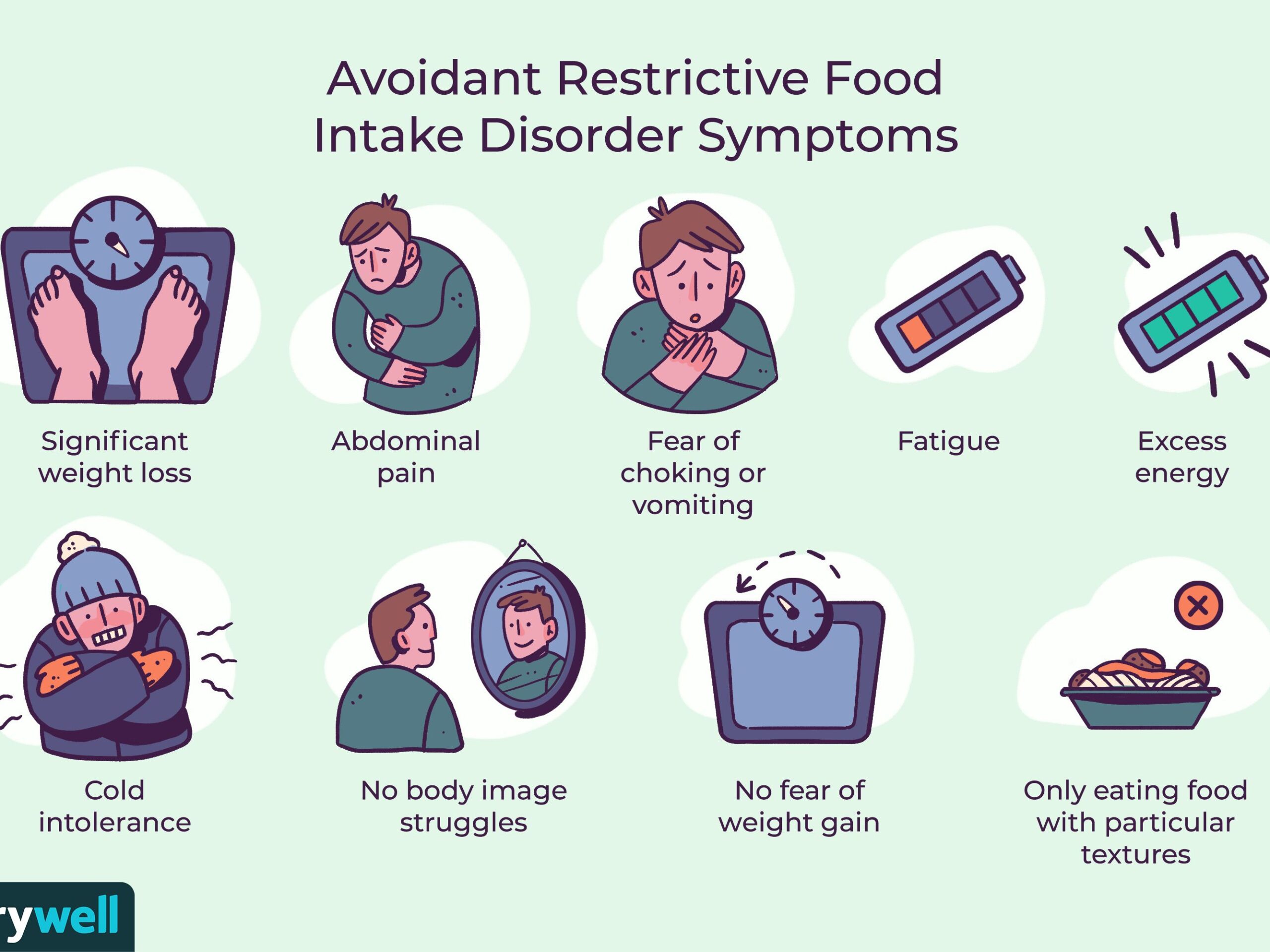Difference Between ARFID and Picky Eating
Both Avoidant/Restrictive Food Intake Disorder (ARFID) and picky eating may involve loss of appetite, weight loss, strong food preferences, and nutritional deficiency. These are also commonly manifested during childhood and may both benefit from the help of dietitian nutritionists, developmental pediatricians, and psychologists. Regarding their differences, the Diagnostic and Statistical Manual of Mental Disorders (DSM-5) defines ARFID as a feeding or eating disturbance characterized by avoidance or restriction of food intake and clinically significant failure to meet requirements for nutrition through oral food intake (2013). On the other hand, picky eating is a common behavior in early childhood, and it is usually categorized as part of a spectrum of feeding difficulties. Picky eaters have strong food preferences and are unwilling to try new foods or even eat familiar ones (Taylor, et al., 2015). The following discussions further delve into their differences.

What is ARFID?
ARFID (previously referred to as Selective Eating Disorder) is a feeding or eating disturbance characterized by avoidance or restriction of food intake and clinically significant failure to meet requirements for nutrition through oral food intake. Specifically, those with this condition have significant weight loss, marked nutritional deficiency, dependence on oral nutritional supplements or enteral feeding, or significant interference with psychosocial functioning. They may dress in layers to hide their weight loss, report consistent but vague excuses around mealtimes, and have a limited range of preferred food. It must be noted that the eating disturbance is not due to lack of food supply, cultural practice, anorexia nervosa or bulimia nervosa, or a concurrent medical condition. ARFID is different from developmentally appropriate behaviors such as picky eating among children and reduced food intake among adults. It may be due to the qualities or sensory characteristics of food; for instance, some people have extreme sensitivity to certain foods’ color, smell, texture, taste, or temperature. It may also be a conditioned negative response caused by aversive experiences such as choking and vomiting. ARFID most commonly develops in infancy or early childhood and may persist in adulthood (DSM-5, 2013).
The risk factors include other mental health conditions (i.e., anxiety disorders, autism-spectrum disorder, obsessive-compulsive disorder, and attention-deficit/hyperactivity disorder), having mothers with eating disorders, and history of gastrointestinal disorders (DSM-5, 2013). The treatments include family-based therapy and medication such as olanzapine for anti-anxiety and appetite stimulation (Spettigue, 2019). People living with ARFID may benefit from various professionals such as registered dietitian nutritionists, occupational therapists, developmental pediatricians, gastroenterologists, psychologists, psychiatrists, and adolescent health physicians (Caporuscio, 2019).

What is Picky Eating?
Picky eating is also known as “choosy eating”, “faddy eating”, or “fussy eating”. This is a common behavior in early childhood and there is no single widely accepted definition; however, it is usually categorized as part of a spectrum of feeding difficulties. Picky eaters have strong food preferences and are unwilling to try new foods or even eat familiar ones; hence, they may eventually suffer from adverse health related outcomes (Taylor, et al., 2015). The causes include early feeding difficulties and late introduction of lumpy foods (Taylor & Emmett, 2018). Moreover, this behavior may be due to the power struggle between the parent and the child or an expression of fear or other negative feelings (DiGiulio, 2018).
Strategies for lessening or avoiding picky eating include parental modelling, repeated exposures to unfamiliar foods, and having positive social mealtime experiences (Taylor & Emmett, 2019). Other tips include changing up the menu, giving options (choices should still be healthy), involving the kids in the meal preparation, and separating behavior issues from picky eating (DiGuilio, 2018).
Difference between ARFID and Picky Eating
Definition
ARFID is a feeding or eating disturbance characterized by avoidance or restriction of food intake and clinically significant failure to meet requirements for nutrition through oral food intake (DSM-5, 2013). In comparison, picky eating is a common behavior in early childhood, and it is usually categorized as part of a spectrum of feeding difficulties. Picky eaters have strong food preferences and are unwilling to try new foods or even eat familiar ones (Taylor, et al., 2015).
Other Terms
ARFID was previously referred to as Selective Eating Disorder while picky eating is also known as “choosy eating”, “faddy eating”, or “fussy eating”.
Feeding Tubes or Nutritional Supplements
People with ARFID may depend on nutritional supplements or feeding tubes to be able to have sufficient nutrition. On the other hand, picky eaters do not usually require supplementation to meet their caloric needs and maintain their growth.
Psychosocial Functioning
ARFID is a mental disorder; individuals with this condition may find social situations extremely challenging due to the food that will be available. Also, they may often say that they are not hungry and often forget to eat. As for picky eaters, they may usually feel hungry and are interested to eat certain kinds of food. Moreover, their preferences are not that extreme that they would feel anxious regarding social events.
Treatment/ Strategies
ARFID requires a more intensive approach due to the marked nutritional deficiency, dependence on oral nutritional supplements or enteral feeding, or significant interference with psychosocial functioning. The treatments include family-based therapy, medication, and professional help from registered dietitian nutritionists, occupational therapists, developmental pediatricians, gastroenterologists, psychologists, psychiatrists, and adolescent health physicians (Spettigue, 2019; Caporuscio, 2019). On the other hand, strategies for lessening or avoiding picky eating include parental modelling, repeated exposures to unfamiliar foods, and having positive social mealtime experiences (Taylor & Emmett, 2019). Other tips include changing up the menu, giving options (choices should still be healthy), involving the kids in the meal preparation, and separating behavior issues from picky eating (DiGuilio, 2018).
ARFID vs Picky Eating

Summary
- ARFID is a feeding or eating disturbance characterized by avoidance or restriction of food intake and clinically significant failure to meet requirements for nutrition through oral food intake.
- Picky eating is a common behavior in early childhood, and it is usually categorized as part of a spectrum of feeding difficulties.
- Unlike picky eating, ARFID requires a more intensive approach due to the marked nutritional deficiency, dependence on oral nutritional supplements or enteral feeding, or significant interference with psychosocial functioning.
- Difference Between Hematoma and Melanoma - February 9, 2023
- Difference Between Bruising and Necrosis - February 8, 2023
- Difference Between Brain Hematoma and Brain Hemorrhage - February 8, 2023
Search DifferenceBetween.net :
Leave a Response
References :
[0]Caporuscio, J. (2019). Avoidant/ restrictive food intake disorder. Medical News Today. https://www.medicalnewstoday.com/articles/327240
[1]DiGiulio, S. (2018). What makes kids picky eaters -and what may help them get over it. Better by Today. https://www.nbcnews.com/better/health/what-makes-kids-picky-eaters-what-helps-them-get-over-ncna846386
[2]Spettigue, W. (2019). Understanding and treating avoidant restrictive food intake disorder in children and adolescents. Psychiatric Times. https://www.psychiatrictimes.com/view/understanding-and-treating-avoidant-restrictive-food-intake-disorder-children-and-adolescents
[3]Taylor, C. & Emmett, P. (2018). Picky eating in children. The Proceedings of the Nutrition Society. https://pubmed.ncbi.nlm.nih.gov/30392488/
[4]Taylor, C., Wernimont, S., Northstone, K., & Emmett, P. (2015). Picky/fussy eating in children. Appetite. https://pubmed.ncbi.nlm.nih.gov/26232139/
[5]Image credit: https://www.verywellhealth.com/thmb/mzQRcPJiek3V9c_iiiEBl5nwwQg=/2667x2000/smart/filters:no_upscale()/avoidant-restrictive-food-intake-disorder-5097152_Final-c0417b8d490b48e992d6d030d28ff59e.jpg
[6]Image credit: https://healthblog.uofmhealth.org/sites/consumer/files/2018-09/michigan-med-c-picky-eater-keyvisual.jpg
